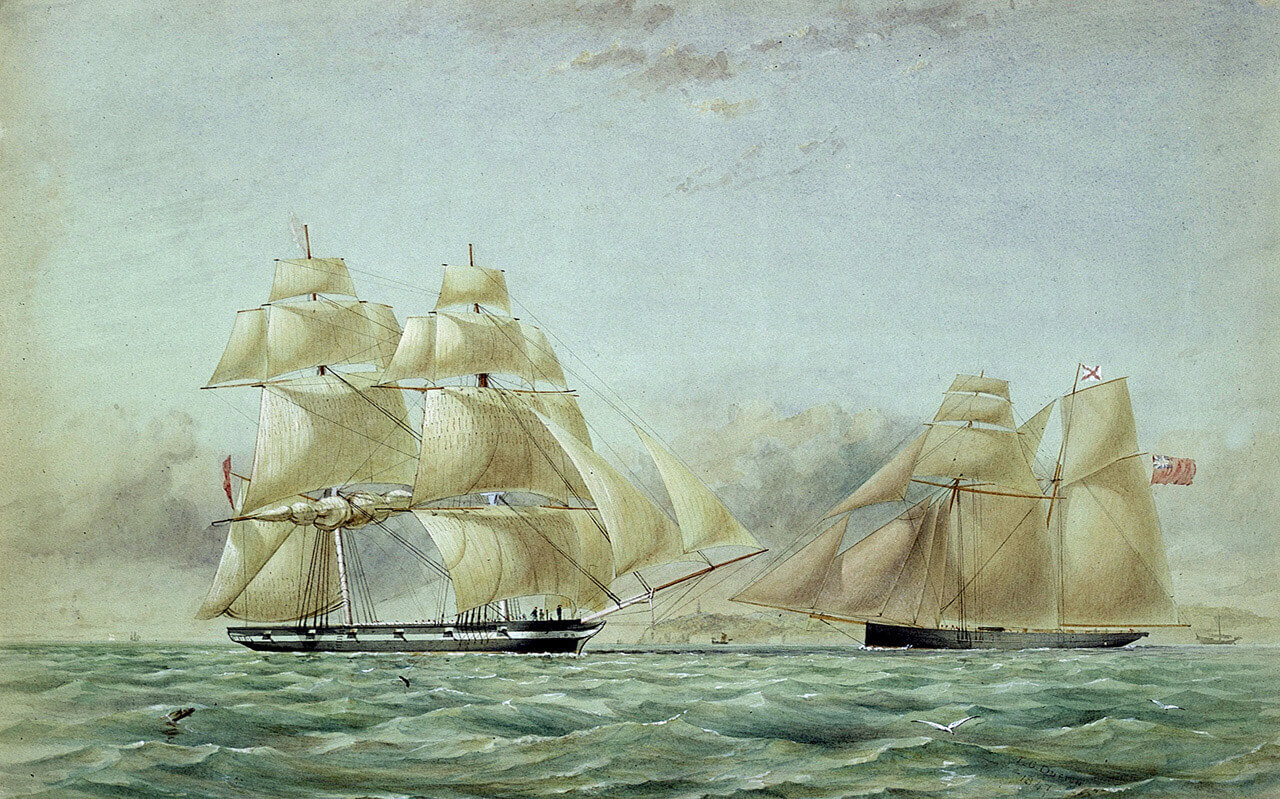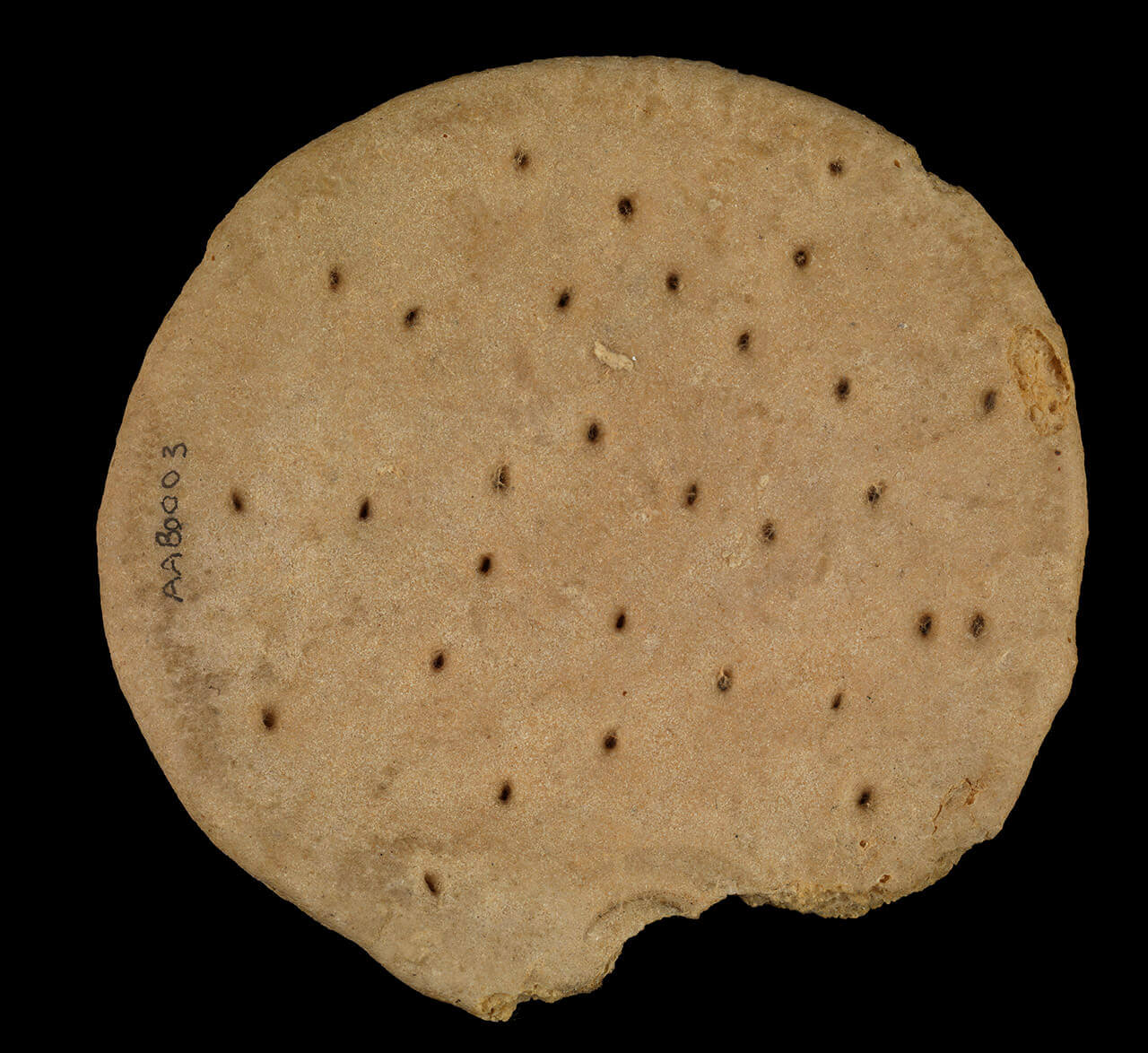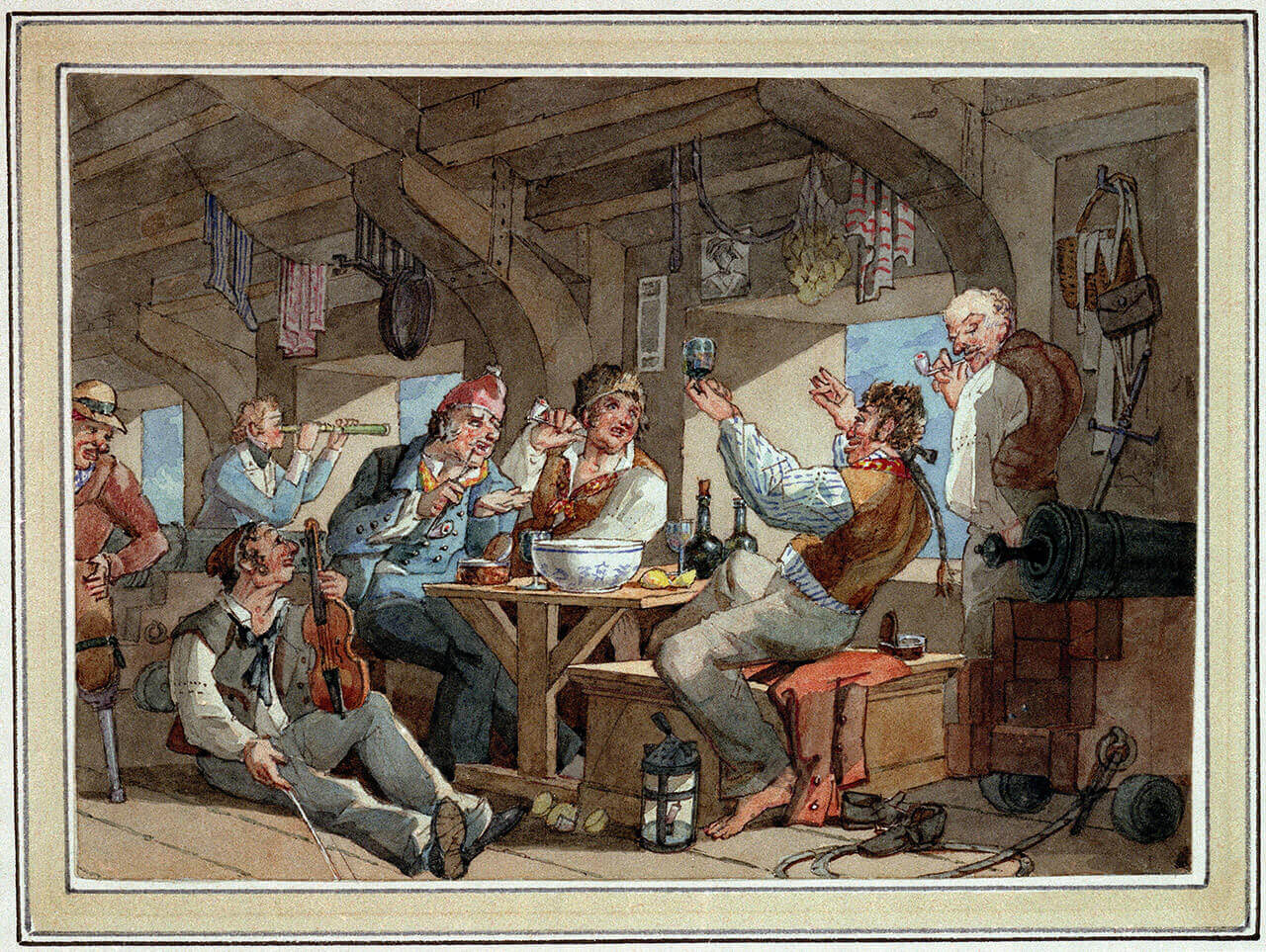
The time period from the middle of the 16th century to the middle of the 19th century is known as the age of sail. Sailing ships were travelling all over the globe. Crew and passengers would often be at sea for weeks, months and even years at a time.
Conditions on board these ships on long voyages weren’t always very comfortable. The ships could be very cramped, with diseases, and the threat of storms and rough seas. Imagine if you suffered from seasickness and couldn’t go ashore for months!

Sailing vessels 'Lyra' and 'Petrel. © National Maritime Museum, Greenwich, London
The food on-board was quite poor quality, especially on long voyages when the supplies had to be stored for a long time. Today we can refrigerate our food to keep it fresh, but this technology wasn’t available at the time so fresh fruit and vegetables didn’t last very long into a voyage.
The crew would eat meat which had been salted to preserve it, along with ship’s biscuits, a type of hard dried bread biscuit that was made to last a really long time. They were so hard that they had to be soaked in soup or a stew to be eaten. As a result of their poor diet, sailors often suffered from scurvy, a nasty disease caused by not getting enough vitamin c.

Ship's Biscuit © National Maritime Museum, Greenwich, London
Life was tough for seamen and there were very strict rules on-board with harsh punishments handed out for anyone who broke them. It could also be a lonely life, with crew being separated from their families with no contact for a really long time.
Both sailors and passengers would be carrying coin with them on these long journeys. As trade expanded further around the globe, people travelling encountered and exchanged different kinds of money from all over the world.

Shipmates carousing on shipboard © National Maritime Museum, Greenwich, London
Drawing of the Purser on the Mary Rose by Oscar Nilsson and the type of gold coins he would have used. © Mary Rose Trust
Suggested links
